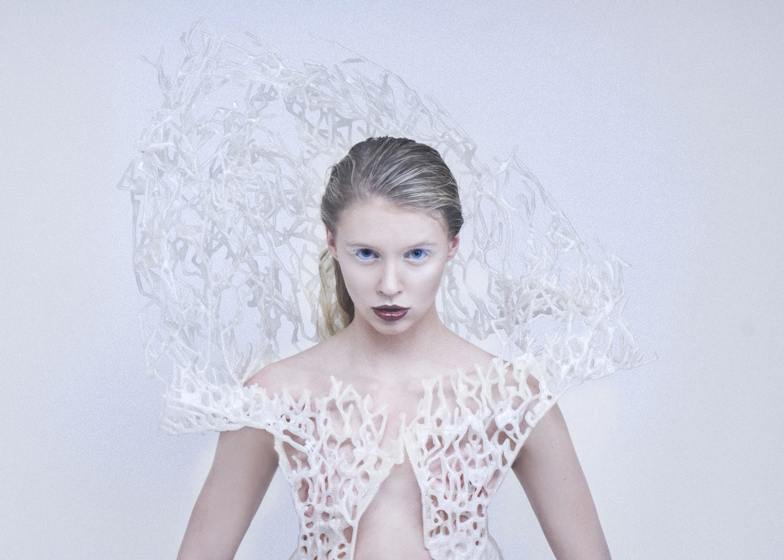Designer Francis Bitonti worked with students to design and 3D-print this delicate dress using clear and flexible filaments.
Francis Bitonti lead a workshop at his studio in which students experimented with digital modelling and 3D-printing technologies, resulting in the creation of the Bristle Dress.
"The project started by exploring different ways and techniques to create volume," said Bitonti. "We were focused on dissolving the silhouette of the body into the atmosphere, we wanted the garment to be transitional."
The coral-like upper portion of the dress was created with translucent PLA filament so the branch-shaped forms blend into the surrounding environment.
"This material was selected for its translucent qualities, the way it refracted the light greatly helped us achieve our design objectives," Bitonti said.
MakerBot's flexible filament was used for the faceted skirt, which is lined with synthetic rabbit fur.
"3D-printing the skirt allowed us to create an interesting interface using the texture of the fur lining that further aided in the creation of our overall silhouette, which combines both artificial and natural textures," the designer said.
This portion has been made open source, and users can download the files from Thingiverse and customise them.
The dress was created on commercially available MakerBot Replicator 2 desktop machines during the New Skins Winter Workshop, held at Bitonti's studio in Brooklyn, New York, earlier this year.
Last summer students at the first edition of the programme created a 3D-printed dress that referenced muscle fibres, veins and arteries.
The next workshop will take place at London's Ravensbourne College in July.
Photographs are by Chris Vongsawat.

